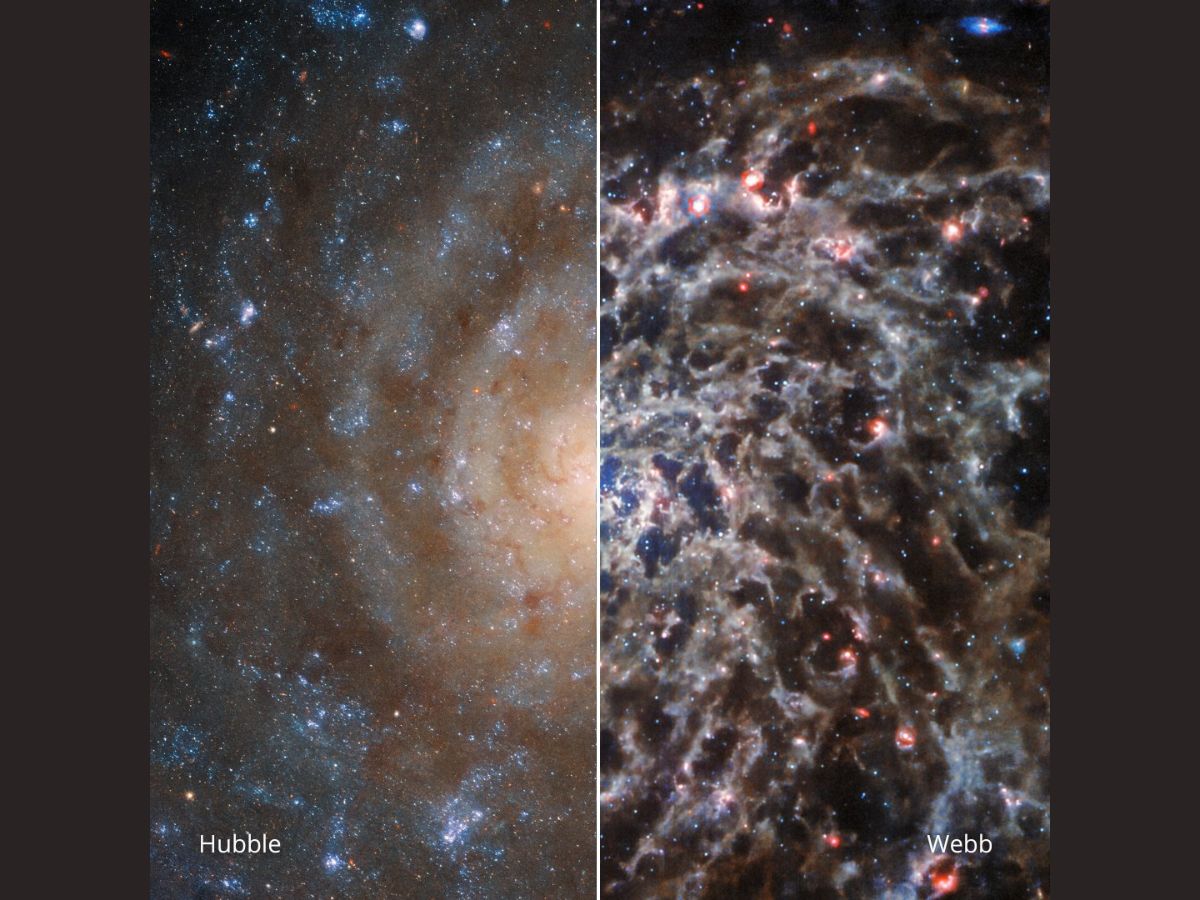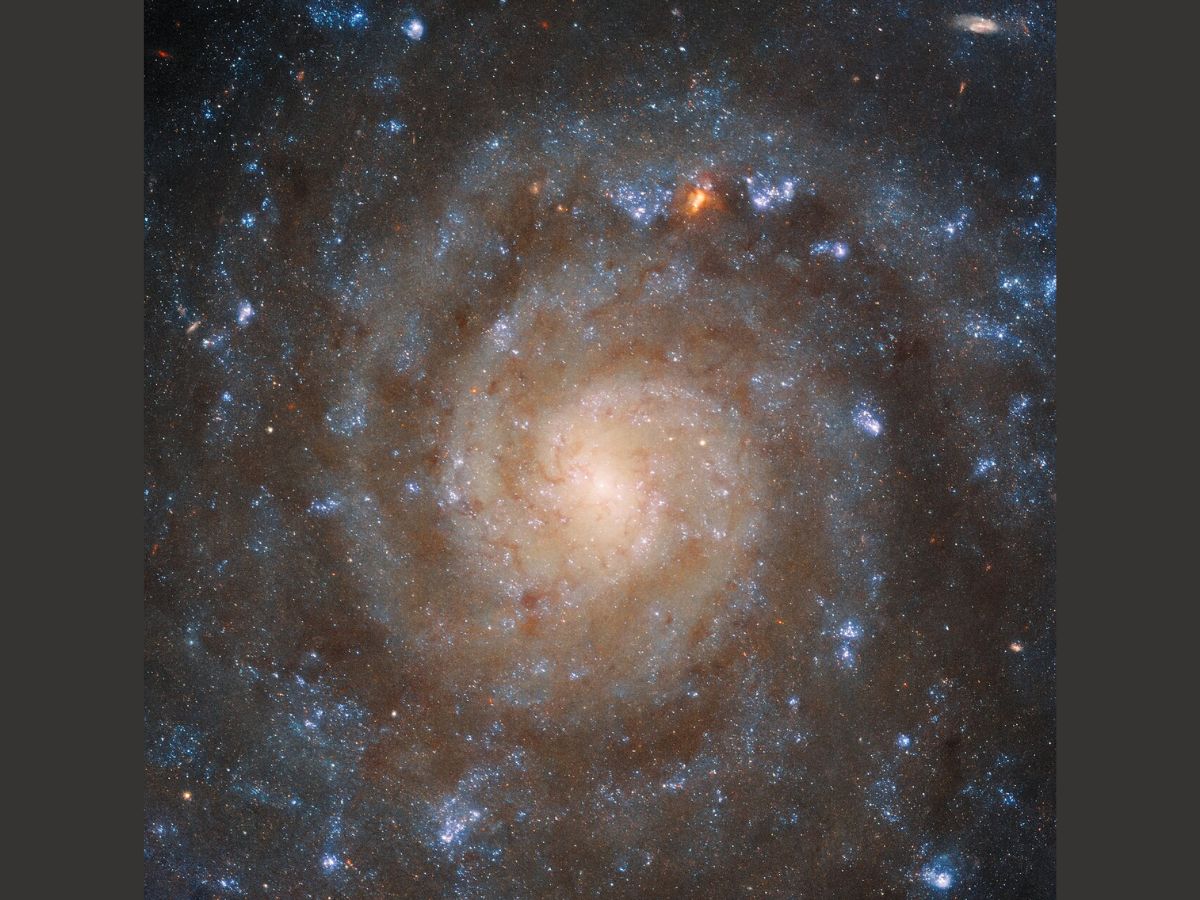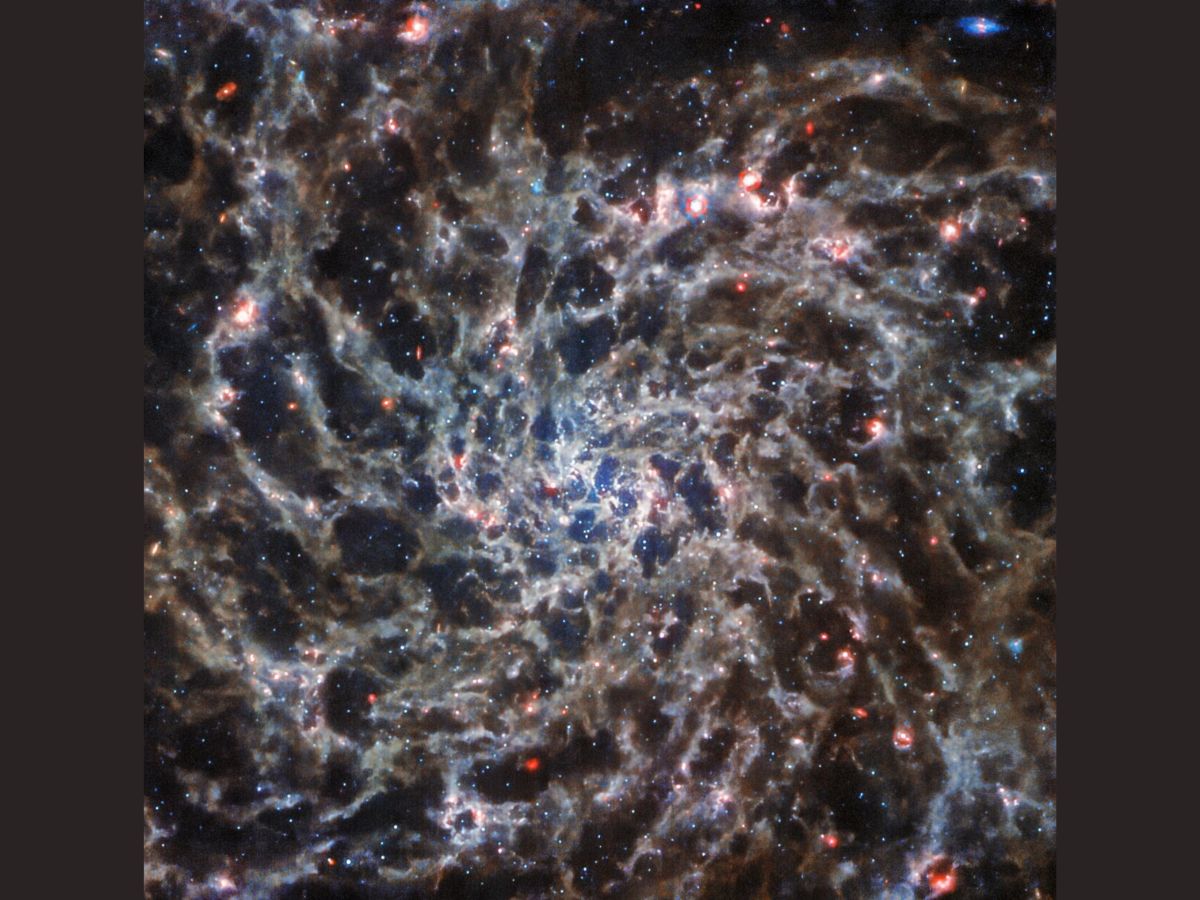James Webb Space Telescope Reveals 'Bones' Of Spiral Galaxy In New Gothic Image
James Webb Space Telesope's Mid-Infrared Instrument (MIRI) has captured the gothic image of IC 5332, and revealed the "bones" of the spiral galaxy, usually hidden by dust.

The James Webb Space Telescope (JWST) has once again left us spellbound with a stunning image of a cosmic object. In its latest image, the JWST, also called Webb, has revealed the "bones" of a spiral galaxy called IC 5332, which lies 29 million light-years from Earth. NASA has described the image as 'gothic', 'dark' and 'moody', and compared it to a picture of the spiral galaxy captured by the Hubble Space Telescope. While Webb sees the universe in infrared light, Hubble takes images of the cosmos in visible and infrared light.
Webb's Mid-Infrared Instrument (MIRI) has captured the gothic image of IC 5332, and revealed the "bones" of the spiral galaxy, usually hidden by dust. IC 5332 has a diameter of roughly 66,000 light-years, and is about a third smaller than the Milky Way. The spiral galaxy is aligned in a way such that it perfectly faces Earth. As a result, the "symmetrical sweep" of the galaxy's spiral arms can be conveniently captured, the European Space Agency (ESA) says on its website.
In visible and ultraviolet light, @NASAHubble (left) shows dark regions of dust that separate the spiral arms. Webb (right) is able to peer through that dust in mid-infrared light, instead seeing patterns of gas that echo the arms’ shape. pic.twitter.com/aigQb59kaI
— NASA Webb Telescope (@NASAWebb) September 27, 2022
Why Is It Difficult To Observe The Cosmos In Mid-Infrared?
Obtaining observations in the mid-infrared region of the electromagnetic spectrum is challenging as the mid-infrared wavelength range is incredibly difficult to observe from Earth. This happens because much of the mid-infrared radiation is absorbed by Earth's atmosphere, and heat from the planet's atmosphere further complicates things.
Comparison Between Hubble And Webb Images Of Spiral Galaxy

Hubble, which had captured the spiral galaxy in visible and ultraviolet light, revealed the dark regions of dust that separate the spiral arms. Webb was able to peer through the dust in mid-infrared light, and see patterns of gas that echo the spiral arms' shape.
Since different stars shine brighter at different wavelengths of light, some stars are clearer in Hubble's view, while other stars are more visible with Webb.
Hubble's Wide Field Camera 3 (WFC3) had captured the spiral galaxy in ultraviolet and visible light. While the Hubble image shows dark regions that seem to separate the spiral arms, the Webb image reveals a continual tangle of structures that echo the spiral arms' shape. The presence of dusty regions in the galaxy is the reason behind the differences in the Hubble and Webb images.

Since ultraviolet and visible light are far more prone to being scattered by interstellar dust than infrared light, dusty regions can be easily identified in the Hubble image as darker regions. Much of the galaxy's ultraviolet and visible light has not been able to travel through the dusty regions.
In the Webb image, the dusty regions are no longer visible. This is because the mid-infrared light from the galaxy has been able to pass through them.

Since Hubble's mirrors were not cool enough, the telescope could not observe the mid-infrared region. Therefore, scientists put extra effort to ensure that MIRI's detectors had the freezing environment necessary to operate properly.
What Makes Webb’s MIRI Special?
MIRI is the only instrument on the world's most powerful telescope that is sensitive to the mid-infrared region of the electromagnetic spectrum, especially in the five-micrometre to 28-micrometre wavelength range. The other instruments on Webb operate in the near-infrared region.
MIRI operates at the frosty temperature of minus 266 degrees Celsius, which is 33 degrees Celsius below the rest of the telescope. In other words, MIRI operates at a temperature of seven Kelvin. This means that MIRI operates in an environment only seven degrees warmer than absolute zero, which is equivalent to zero Kelvin, the lowest possible temperature according to the laws of thermodynamics.
ALSO READ | James Webb Space Telescope's First Image Of Neptune Gives 'Clearest' Look At Its Rings In Decades
MIRI has highly specialised detectors, and for them to function optimally, a frigid environment is essential. MIRI also has a dedicated active cooling system to ensure that its detectors are kept at the correct temperature.
The Hubble and Webb images of the spiral galaxy IC 5332 complement each other in a remarkable way, and together, provide us a more complete understanding of the galaxy's structure and composition.
ALSO READ | James Webb Space Telescope Captures Its First Images Of Mars. Know What They Mean







































